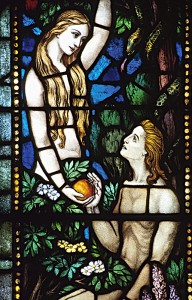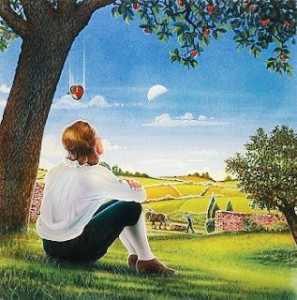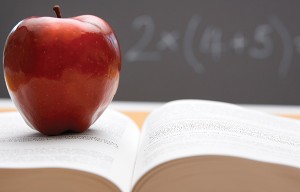While the apple is commonly depicted as the forbidden fruit from the Tree of Knowledge that tempted Eve and Adam in the Garden of Eden, the Bible never called the fruit by name or described it.
Archaeological evidence suggests that the apple was unknown in the Middle East at the time the Book of Genesis was written. It’s believed English poet John Milton may have been the first to identify the apple as the forbidden fruit in his 1667 epic poem Paradise Lost.
Coincidentally, that was about the same time Isaac Newton developed his theory on gravity which was supposedly inspired by an apple. (See below.)
Source: U.S. Apple Association
Indiana’s favorite apples:
The most popular varieties of apples grown in Indiana are:
- Red Delicious
- Golden Delicious
- Jonathan
- Gala
- Rome
- Fuji
These six varieties comprise 70 percent of the trees in the state. The other 30 percent of trees is made up by some 95 other apple varieties.
Source: Purdue University
The story that Sir Isaac Newton discovered the law of gravity in the 1660s when an apple bonked him on the head has long been debunked. But it is believed Newton may have watched an apple drop while in the garden, and, though not an “ah-ha” moment, it helped Newton hone his theory. And, he also cleverly may have honed the anecdote over time because it made for a good story, and the story fit the idea of an Earth-shaped object being attracted to the Earth.
A Newton biographer has offered the story as a metaphor as a way to express Newton’s curiosity about the world, rather than as a literal tale about a specific singular moment that redefined his view of things.
Sources: NPR, Wikipedia
A big shiny apple has always had a special place on the teacher’s desk in the little red schoolhouses of yore. This tradition began, it’s believed, on the American frontier when teachers frequently received both food and housing from the families of their pupils.
The custom continued after the practical purpose of feeding teachers disappeared. It took on a new meaning as “apple polishing”: the gift of a bright, shiny apple was seen as a way children whose math skills were less than exemplary sought to win their teacher´s favor.
Bing Crosby’s 1939 tune, “An Apple for the Teacher,” explains the persuasive allure of the fruit. “An apple for the teacher will always do the trick when you don’t know your lesson in arithmetic.”
The phrase “apple-polisher” also became shorthand for “brown-noser” or “suck-up.”
Sources: Smithsonian Magazine/U.S. Apple Association
United States of Apples:
Seven states have officially declared apples or a particular apple variety as their state fruit.
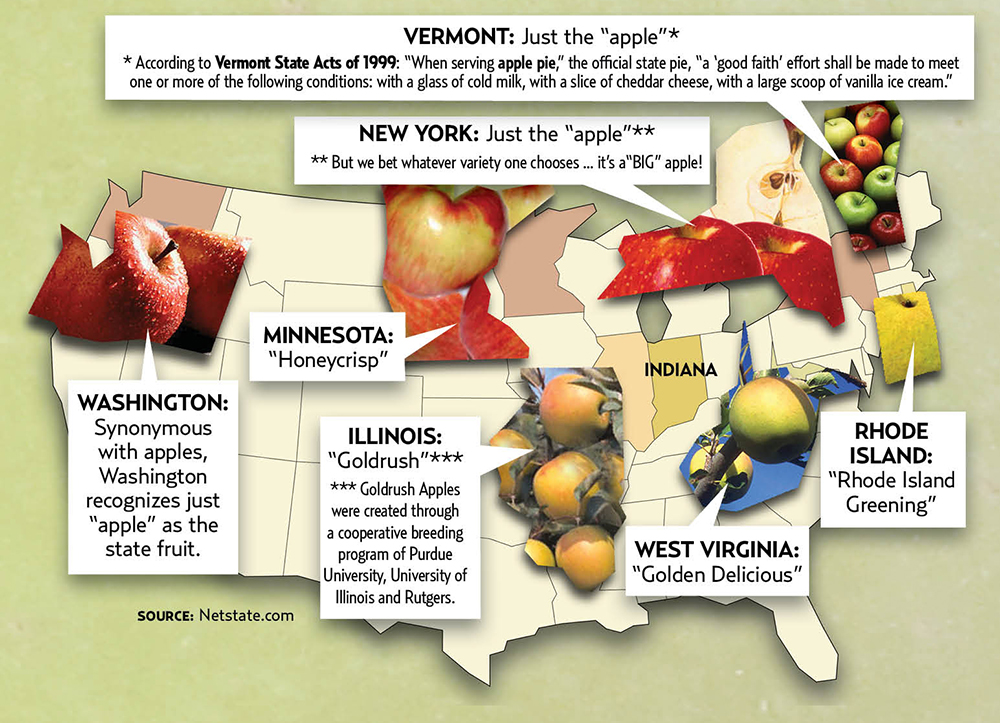 Comparing Apple Corps to Apple Inc.
Comparing Apple Corps to Apple Inc.
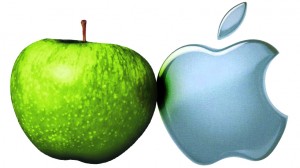 An apple is used as the name and logo of two of the best-known products in their respective orchards of industry: Apple Corps Ltd., with its Apple Records, was the company created by the Beatles in 1968; and Apple Inc., the consumer electronics giant begun as Apple Computers in 1976.
An apple is used as the name and logo of two of the best-known products in their respective orchards of industry: Apple Corps Ltd., with its Apple Records, was the company created by the Beatles in 1968; and Apple Inc., the consumer electronics giant begun as Apple Computers in 1976.
The Beatles picked “Apple” because it was suggested in its formation that “A is for apple” is the first thing a child learns in school. They also liked the pun of “Apple Corps” (pronounced “core.”) The iconic green Granny Smith apple logo was inspired by a painting Paul McCartney owned by René Magritte.
Apple Computers selected the fruit to break away from all the high-tech-sounding names other computer companies used, and said apples represented simplicity yet sophistication, which was what their products were all about.
When the upstart computer company began, Apple Corps sued in 1978 for trademark infringement. The suit was settled in 1981 with an undisclosed amount being paid to Apple Corps. But as Apple Computers, which became Apple Inc., continued advancing its product lines into music, with iTunes, iPods, and more, lawsuits flared up again. In 2007, Apple Inc., which now dwarfed Apple Corps, announced a settlement under which Apple Inc. would own all of the trademarks related to “Apple” and would license certain trademarks back to Apple Corps for its continued use. As one lawyer observed, the company that controls the greatest consumer footprint tends to control trademark law.
Source: Fruitguys, Wikipedia
Richard G. Biever, senior editor of Electric Consumer, compiled and wrote the text. Read the September 2015 featured story on apples!

